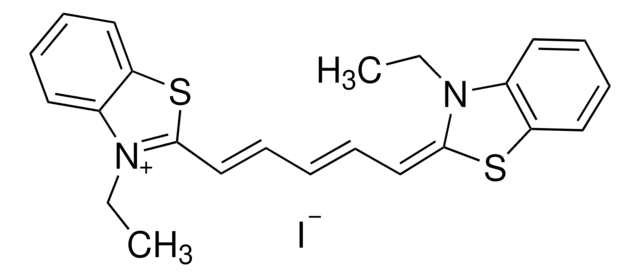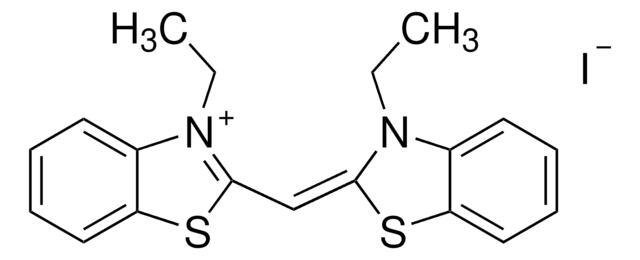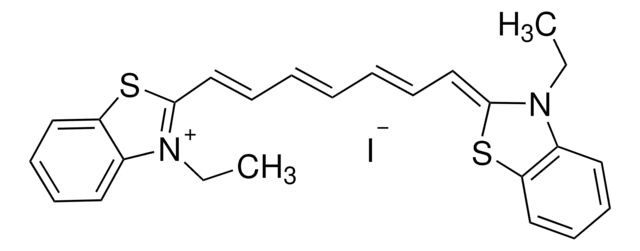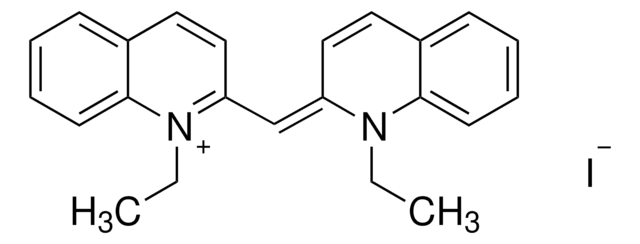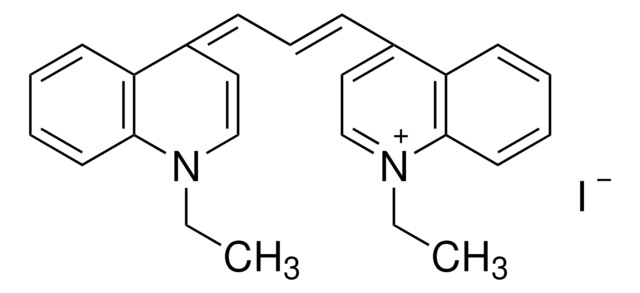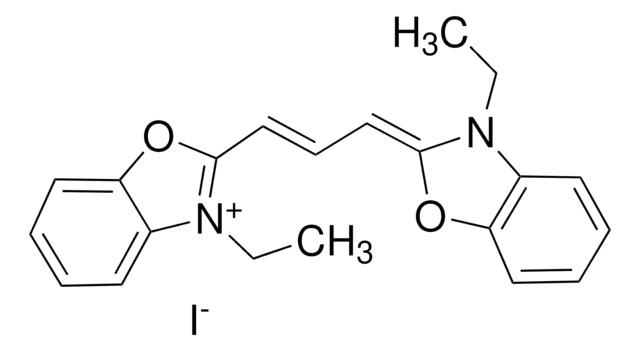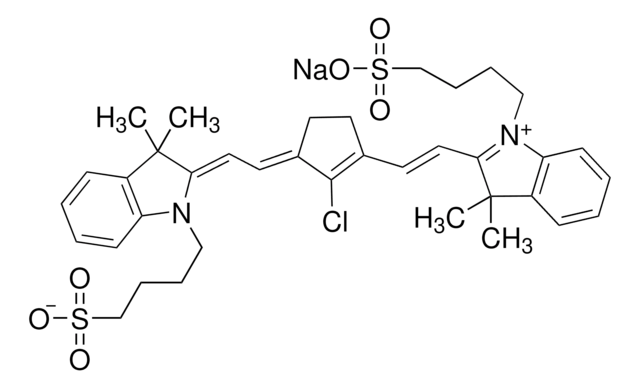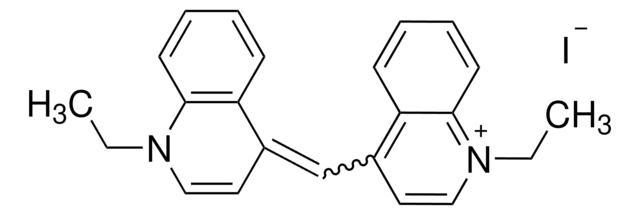173738
3,3′-Diethylthiacarbocyanine iodide
Dye content 95 %
Synonyme(s) :
3-Ethyl-2-(3-[3-ethyl-2(3H)benzothiazolylidene]-1-propenyl)benzothiazolium iodide, DiSC2(3)
About This Item
Produits recommandés
Forme
solid
Niveau de qualité
Composition
Dye content, 95%
Pf
268-270 °C (dec.) (lit.)
λmax
560 nm
Chaîne SMILES
[I-].CCN1\C(Sc2ccccc12)=C\C=C\c3sc4ccccc4[n+]3CC
InChI
1S/C21H21N2S2.HI/c1-3-22-16-10-5-7-12-18(16)24-20(22)14-9-15-21-23(4-2)17-11-6-8-13-19(17)25-21;/h5-15H,3-4H2,1-2H3;1H/q+1;/p-1
Clé InChI
VZBILKJHDPEENF-UHFFFAOYSA-M
Vous recherchez des produits similaires ? Visite Guide de comparaison des produits
Description générale
Application
Mention d'avertissement
Warning
Mentions de danger
Conseils de prudence
Classification des risques
Eye Irrit. 2 - Skin Irrit. 2 - STOT SE 3
Organes cibles
Respiratory system
Code de la classe de stockage
11 - Combustible Solids
Classe de danger pour l'eau (WGK)
WGK 3
Point d'éclair (°F)
Not applicable
Point d'éclair (°C)
Not applicable
Équipement de protection individuelle
dust mask type N95 (US), Eyeshields, Gloves
Faites votre choix parmi les versions les plus récentes :
Certificats d'analyse (COA)
Vous ne trouvez pas la bonne version ?
Si vous avez besoin d'une version particulière, vous pouvez rechercher un certificat spécifique par le numéro de lot.
Déjà en possession de ce produit ?
Retrouvez la documentation relative aux produits que vous avez récemment achetés dans la Bibliothèque de documents.
Articles
Developed in the last several years, fluorescence quenching microscopy (FQM) has enabled rapid, inexpensive, and high-fidelity visualization of two-dimensional (2D) materials such as graphene-based sheets and MoS2.
Graphene has emerged as the new wonder material. Being only one atom thick and composed of carbon atoms arranged in a hexagonal honeycomb lattice structure, the interest in this material has exploded exponentially since 2004 when it was first isolated and identified using a very simple method.
Notre équipe de scientifiques dispose d'une expérience dans tous les secteurs de la recherche, notamment en sciences de la vie, science des matériaux, synthèse chimique, chromatographie, analyse et dans de nombreux autres domaines..
Contacter notre Service technique